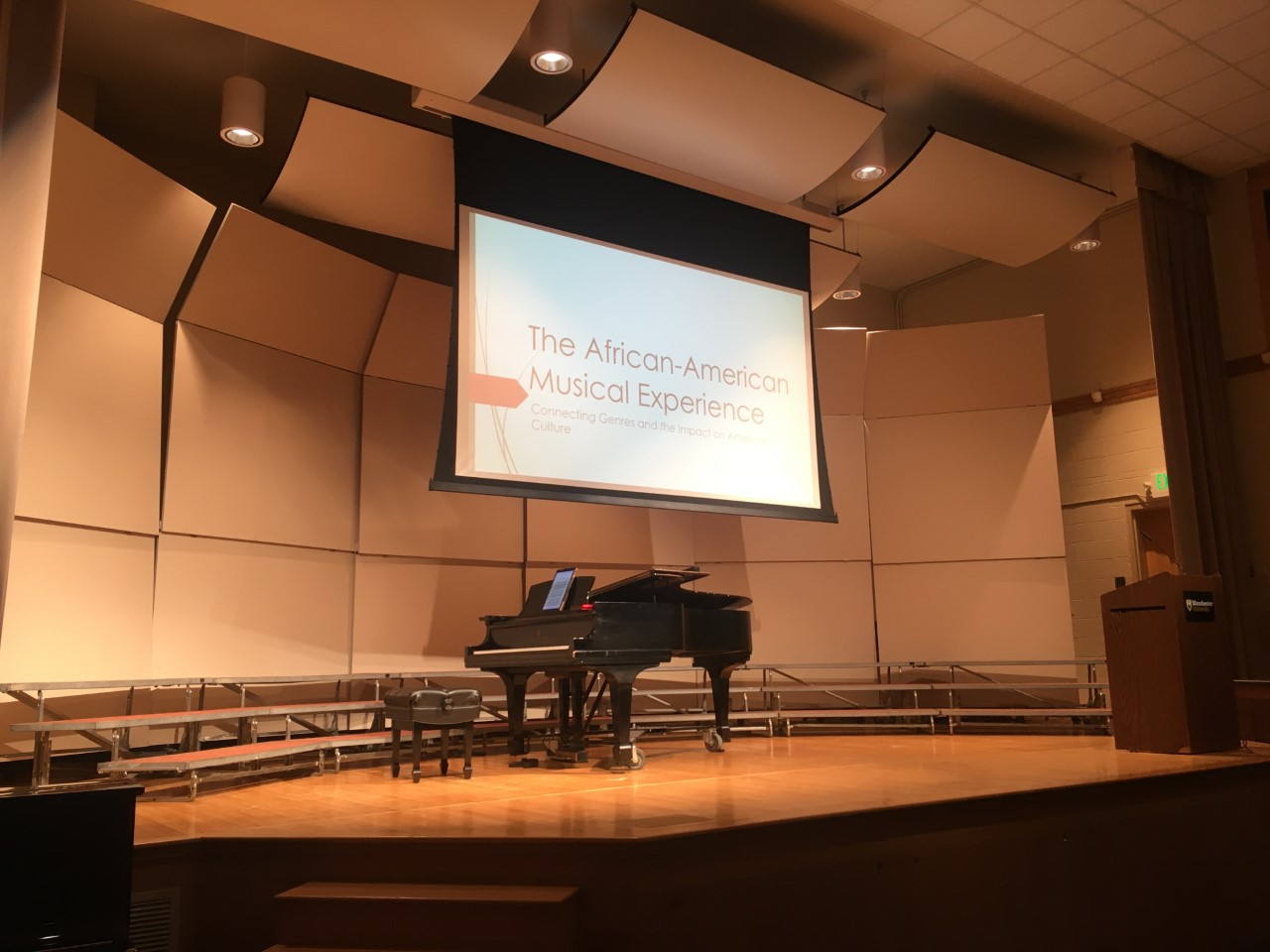 Rory Wallace performed influential African American songs in the Wine Recital Hall.
Rory Wallace performed influential African American songs in the Wine Recital Hall.
Photo by Chloe Arndt
Performer Rory Wallace Shares Music’s Evolution with MU
Ryan Daine
A pleasant evening with the demonstration of culturally significant music ranging from traditional African rhythms to blues-inflected Motown filled the Wine Recital Hall on the mild-weathered evening of Tuesday, February 18. Following a brief introduction from Maegan Pollonais, the assistant director of Student Diversity and Inclusion at MU, guest performer Rory Wallace entered onto the brightly lit stage to demonstrate an interactive and interpretive showcase of African American musical history, along with a slideshow presentation showcasing music’s technical evolution from the 1600s onward into the 21st century.
Wallace, accompanied by Dr. Pamela Haynes on the grand piano, not only spoke about music, but performed it as well. He focused his presentation on what he believed to be the most influential African American dominated musical genres that have enriched and altered the American musical landscape over multiple centuries. Each section of the presentation included a brief oral history lesson of the genre, complete with defining characteristics and attributes, along with a slideshow. Following the history lesson, Wallace performed an example of each genre of music which he found to be both culturally significant and showcased the technical aspects.
One early song he performed was a traditional West African piece known as “Fanga Alafia.” The song is in both the traditional Yoruba language, as well as in English, with a focus on improvised rhythmic patterns as well as an off-kilter melody structure. Showcasing his commanding yet gentle tenor, Wallace performed the traditional piece with grace and bravado equally, making for a surprising introduction into the evening ahead.
Moving forward, Wallace piloted the lecture-performance into the tumultuous history of slavery during the 1700 and 1800s, choosing to focus on the African American contribution to both slave spirituals and the emergence of gospel hymns as well. Wallace explained that traditional spirituals, which honored the legacy of improvised rhythms present in African music, were commonplace during the era of slavery and used for inspiration and secret communication among captive slaves. Following the end of the Civil War and the signing of the Emancipation Proclamation, spirituals took a turn toward assimilation. Wallace explained the history, in great detail, as to how traditional spirituals blended with Caucasian church songs to become what we now know as gospel hymns.
This crossover did not come without sacrifice, Wallace explained. As the rhythmic core of African songs, which found their beauty in the improvised chaos of their loose structures, suddenly disappeared in favor of tightly controlled melody structures, as was already common in white American music at the time.
As the presentation moved forward, Wallace cited such distinct musical genres as jazz and early 20th-century theatre tunes, showcasing the history clear up to the 1950s and ’60s with the rising popularity of Motown rhythm and blues. This rather large swathe of the show was professionally accompanied by Haynes on the grand piano, playing smoothly and with precision as Wallace belted out example after harmonious example, showcasing the evolution of African American musical culture.
Wallace closed his performance with a spiritual-gospel hybrid called “You Can Tell the World,” which he felt truly embodied the nature of African American music and the impact it has created within our American culture. Before his performance, however, Wallace had a rather poignant remark, which in essence summed up the collective evening in a few words. “They were a disenfranchised group of people, who came to this country with nothing but their values, and bits of their indigenous culture,” he said. “They have made such an impact on the American musical landscape. Blues, doo-wop, funk, hip-hop, rhythm and blues, and rock and roll are just a few genres of music that were derived directly as a result of African American influence.”
Wallace received a long and well-deserved standing ovation from the entire audience following his final performance. “I found it very interesting to be able to learn firsthand about the contributions African Americans had on our musical landscape,” said Marina Abner. “What made it even more worthwhile was the personal aspect of the singing and the piano, accompanied by the information from the presentation. It taught me a lot about something I knew very little of, while also being a great source of entertainment; I’m glad that I came out to see this tonight.”